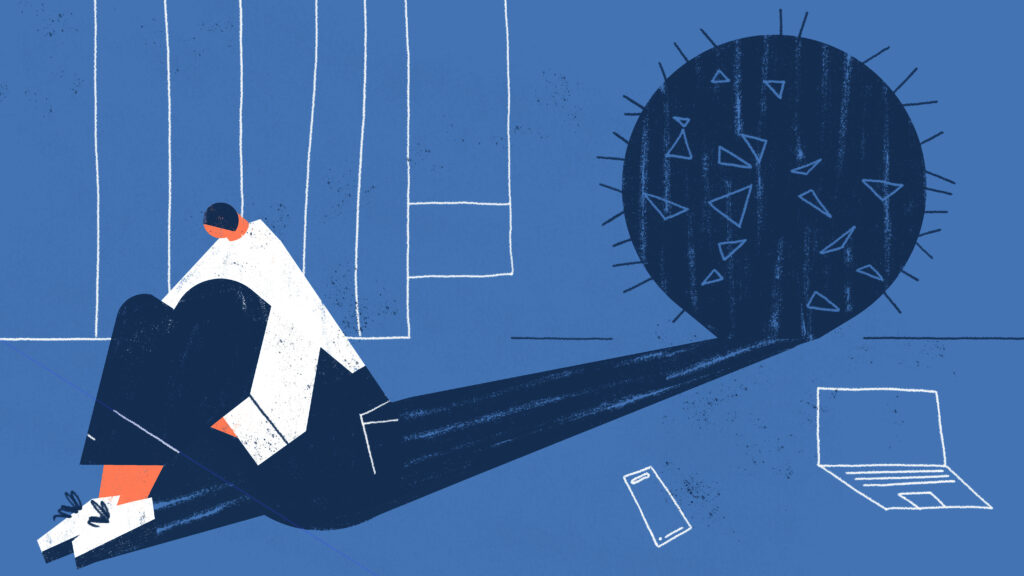A late-night Flomax commercial is sometimes all it takes for me to start spinning in a cycle of anxiety. If I don’t need Flomax to help me pee better, then I imagine I probably need a screening for prostate cancer.
I’m a hypochondriac. I’m also a health care executive with insight into how the U.S. health care system works — and doesn’t work — which may contribute to my hyper focus on health.
advertisement
People like me are often dismissed by family, friends, and many doctors. Hypochondria gets short shrift in the mental health space, obscured by the overarching and broad category of general anxiety disorder. Even in the post-Covid-19 era, where mental health has taken center stage, hypochondria — also known as illness anxiety — has yet to be given even a supporting role. The ripple effects of that require collective attention.
People with hypochondria put a significant burden on the health care system. The condition, characterized by a fixation on a fear of having a serious illness or dying, often leads individuals through a cascade of unnecessary medical tests and consultations. It is estimated that it costs the health care system hundreds of billions of dollars a year.
Insurance holders, both individual policyholders and companies providing benefits for their employees, feel the economic impact of this disorder on their costs, with overutilization eventually showing up in everyone’s increased copays and premiums, at great inequity to the average person.
advertisement
A holistic approach to hypochondria
Frontline health care professionals must act in service to both their patients and the greater health care system as costs and resource run downhill quickly. And in an age of burnout, they must protect their own capacity (and faculties). Emergency room doctors are the first line of defense against people like me putting unneeded stress on the health care system. They must have a trained eye to spot hypochondria, a gentle touch to quell the mortal anxieties of those afflicted with it, and a firm resolve to deny superfluous care.
While hypochondriacs can tell you the names of the people staffing the emergency department as easily as the names of their kids, primary care also has a meaningful frontline role to play. As a group, people with hypochondria see their primary care clinicians far more often than the average person. This cohort knows who and what we are, and is best placed to influence our journeys.
If a person with hypochondria seeking care for something — but has no symptoms — is knowingly or unknowingly indulged by a health care professional, the journey could be down two destructive and costly paths: misdiagnosis or over-testing. Failing to diagnose hypochondria for what it is could perpetuate a cycle of fear and worry, increasing the likelihood of more doctor visits and more testing.
Changing the approach to identifying and treating hypochondria requires health care professionals to strike a challenging — but necessary — balance of thoroughly vetting their patients’ claims while remaining cautious of not overselling or recommending a battery of tests.
Fostering an environment of empathy and training health care providers (especially emergency doctors) to recognize and document people with hypochondria can close the gap in care between perceived and actual health concerns. Referrals to mental health professionals who treat hypochondria with cognitive behavioral therapy or medications the Food and Drug Administration has approved for treating hypochondria will create a realistic approach to addressing and validating people living with hypochondria.
What would also help is instituting a medical billing code for hypochondria. Without one, there is no way to diagnose and track outcomes of people frequenting the emergency department or primary care offices in search of reassurance and relief from anxiety.
In parallel, the health care industry needs to increase access to cutting-edge health care technology, such as full-body CT scans, which can detect in one sweep everything from broken bones to blood clots, infections, inflammation, and tumors. Such tools, along with personalized health monitoring devices, can provide individuals with the reassurance and clarity they need to proactively manage their health concerns.
Full disclosure: I paid out of pocket for my full-body CT scan. The results gave me great comfort. I fully recognize that the cost of full-body scans need to come down to be truly accessible (and believe that will happen given the history of competition) and understand that the procedure may not give everyone the comfort it gave me: Clear results made me feel like a weight had been lifted off my chest.
Equipping people with the means to understand and track their health indicators will reduce the psychological burden of uncertainty among many people with hypochondria. They — as well as people without this condition — will also benefit from an enhanced preventive care landscape, ultimately leading to a more efficient and cost-effective health care system.
The U.S. health care system broadly, and health care providers like emergency clinicians and primary care providers in particular, must work together to challenge the misinterpretation of hypochondria and illness anxiety that has led to a culture of misunderstanding and stigma and begin treating it properly. The question is, will that ever happen?
Hal Rosenbluth is the CEO of New Ocean Health Solutions, a digital health care company, and co-author with Marnie Hall of “Hypochondria: What’s Behind the Hidden Costs of Healthcare in America” (Rodin Books, June 18, 2024).

